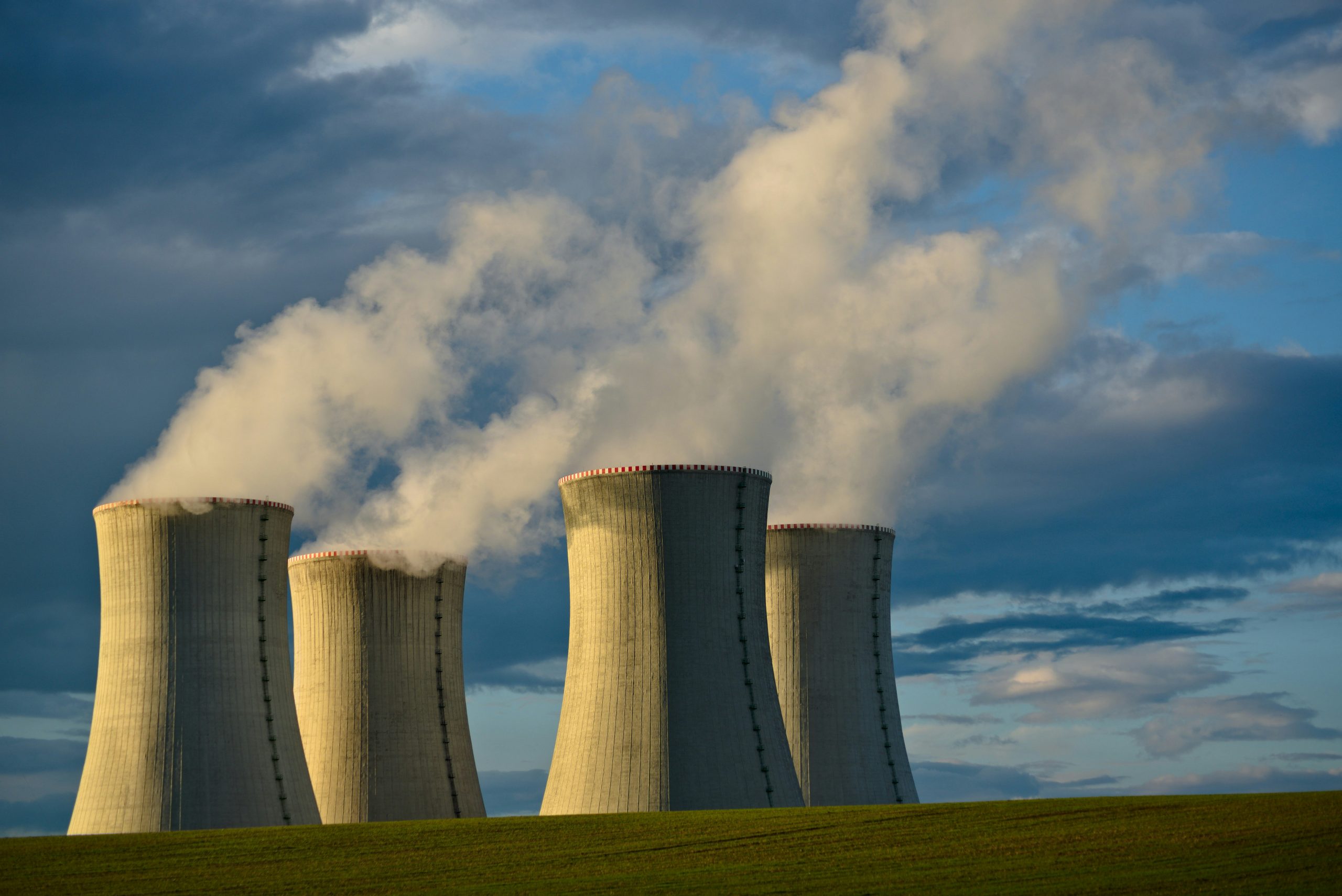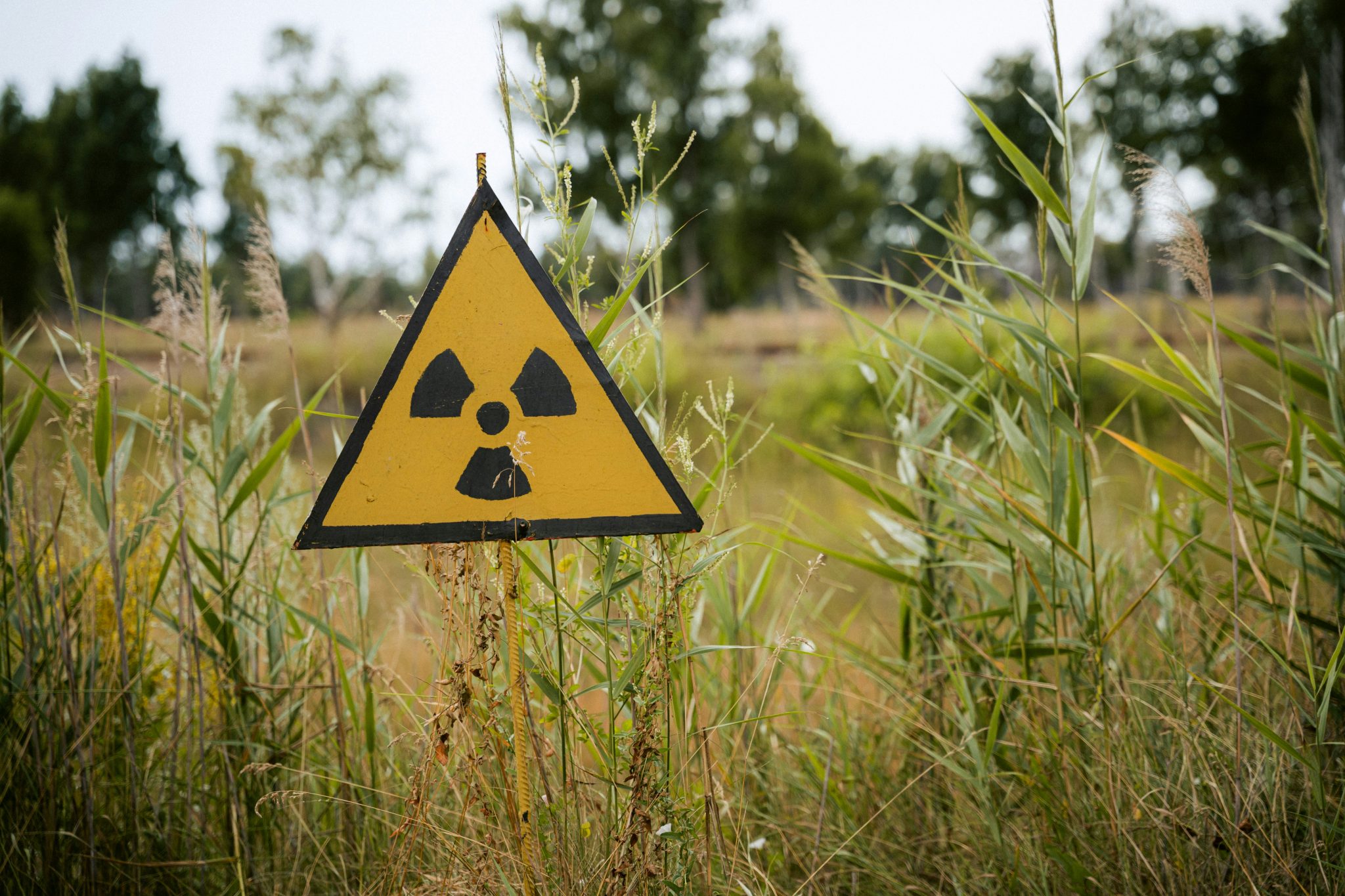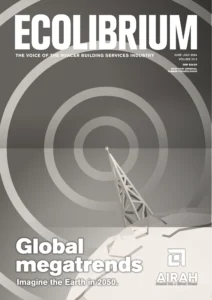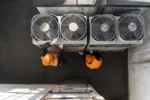Atomic habits

Should there be a green light for nuclear energy in Australia? Definitively no, writes Ian Kenins.
A rapidly expanding population, power outages, surging power bills, and an increasingly volatile climate has made, somewhat belatedly, Australia’s future energy supply a major issue.
In March this year the federal opposition leader, Peter Dutton, sparked the debate when he declared the coalition will take a pro-nuclear policy to the next election.
“We need to have a mature conversation about nuclear,” said Dutton during a factory visit. “It’s the latest technology that has zero emissions and it can firm up renewables in the system.”
Dutton later told the ABC Insiders program, “As we know, 90 per cent of baseload power comes out of the system over the next decade [as old, highly polluting coal-fired plants are decommissioned]. We can’t turn the old system off until the new one’s ready. I know that people want to pretend that wind and solar can go around the clock. It can’t.”
To no one’s surprise, much of the response was political.
“Tell him he’s dreaming,” said the Federal Energy Minster Chris Bowen, channelling his inner Darryl Kerrigan.
Dutton’s only detail was in the type of nuclear reactor he proposed – small modular reactors (SMRs), which he says, “take [up] two hectares of land. The equivalent energy yield out of solar takes 4,000 hectares.” By contrast, a conventional nuclear power plant requires some 335 hectares.


Ed’s note: At this juncture, and at the risk of spoiling the tension for the remainder of the article, it’s possibly worth raising a few points. The first of these is that small modular reactors ARE NOT OPERATING IN ANY OECD country (see breakout), and there is no clear indication of whether they ever will. Some cynical commentators, me among them, are somewhat skeptical about the impetus for the current nuclear conversation. Could it simply be a tactic driven by the powerful fossil fuel lobby in order to keep doing business as usual?
The size comparison
The US-based Nuclear Energy Institute says that for a solar PV (photovoltaic) facility to match a conventional nuclear station’s output would require between 11,000 and 19,000 hectares to store the panels. For a wind farm to generate the same amount of electricity in a year, the turbines would need some 67,000 to 93,000 hectares of land.
The website of the International Atomic Energy Agency (IAEA), the world’s leading authority on nuclear power, includes an explainer page on the advantages of SMRs. One of those is that, “Prefabricated units of SMRs can be manufactured off-site then shipped and installed onsite …”
Again, only if they become viable, and that’s obviously a huge “if”.
The numbers, globally
There are 440 nuclear reactors operating in some 30 countries worldwide. The energy they produce accounts for 10 per cent of the supply in those countries.
Nuclear power’s biggest advantage is the amount of energy one plant can produce without producing substantial greenhouse gas emissions. There are, however, emissions associated with a plant’s construction, transport of its waste, and its eventual decommissioning.
The SMRs Dutton proposes are, according to the Australian Nuclear Science and Technology Organisation (ANSTO), are “still in their infancy and a relatively untested concept”.
“Any estimate about cost or time to construct, whether optimistic or pessimistic, should be considered with a high degree of uncertainty,” the IAEA says. “Their economic competitiveness is still to be proven in practice once they are deployed.”
After conducting a report into the costs and alternatives for future electricity generation and storage, last December the CSIRO released its findings, titled, The question of nuclear in Australia’s energy sector.
“Nuclear is not economically competitive with renewables,” stated the summary, adding that “SMRs are commercially immature” and that the 15 years of development time in Australia for large or small-scale reactors means nuclear “will not play a major role in electricity sector emission abatement, which is more urgent than abatement in other sectors.”
CSIRO energy economist Paul Graham says the report, “remained consistent with findings from previous years, showing renewables, led by onshore wind and solar photovoltaic (PV), have the lowest cost range of any power-generation technologies.”
Nuclear power is on the way here in the form of some very expensive AUKUS submarines, and already industry insiders are concerned Australia lacks a suitably skilled workforce.
Defence Connect, an organisation providing insights and market intelligence for the sector, cited a federal government report titled, Nuclear-Powered Submarine Taskforce – Initial Civilian Nuclear Workforce Study, Gap Analysis and Supply and Demand Analysis.
“There is no current Australian talent pool with the required mix of qualifications, skills, experience, and behaviours to fulfil the civilian nuclear workforce roles,” noted the report.
Should a nuclear power plant be given the green light (pun intended), there will be immense pressure on universities and TAFE colleges. Speaking to the Australian Financial Review last year, Dr Edward Obbard, coordinator of the University of NSW’s nuclear engineering program, said educating a workforce of this size is a “major academic undertaking”.
“Any estimate about cost or time to construct, whether optimistic or pessimistic, should be considered with a high degree of uncertainty”
Support from James Hansen
Among its supporters, nuclear energy counts one of the world’s leading climate scientists. James Hansen was, for several decades, head of NASA’s Goddard Institute for Space Studies, which studies atmospheric change. Researching the effects of chemicals in the Earth’s ozone layer, in 1988 Hansen warned the US Congress that global warming was already a problem.
He became a pin-up boy for the environmental movement, often marching, and sometimes being arrested with, demonstrators at rallies. But in a 2011 paper titled Baby Lauren and the Kool-Aid, he shocked many by saying nuclear power was the best alternative to lower the carbon footprint and, “suggesting that renewables will let us phase rapidly off fossil fuels … is almost the equivalent of believing in the Easter Bunny and Tooth Fairy”.
Hansen believes there are better ways of building nuclear power plants than the current lightwater reactors that burn less than 1 per cent of the energy in the original uranium ore, leaving a radioactive waste pile for more than 10,000 years.
“The fourth-generation reactors can ‘burn’ this waste, as well as excess nuclear weapons material, leaving a much smaller waste pile, with radioactive half-life measured in decades rather than millennia,” Hansen explains. “Our governments haven’t supported [nuclear] research and development over the decades.”
Friends of the Earth
Among those who disagree with Hansen are the Friends of the Earth (FoTE). In a 2017 post titled James Hansen’s nuclear fantasies, they claim, “Even if Hansen’s favoured Generation IV concept worked as hoped, they would still leave residual actinides, and long-lived fission products, and long-lived intermediate-level waste in the form of reactor and reprocessing components … all of it requiring deep geological disposal.”
FoTE also noted the costly clean-up of the seldom-used and leaky decommissioned Monju Generation IV reactor on Japan’s west coast. The country’s Atomic Energy Agency estimated the clean-up at approximately AUD$4 billion and, adds FoTE, “no allowance is made for the cost of disposing of the spent fuel, and in any case, Japan has no deep geological repository to dispose of the waste.”
Nor does Australia. The Lucas Heights facility in southern Sydney has been operating since 1958, but aside from producing radioisotopes – used to conduct stress testing of welds on structures like an aeroplane’s jet engine turbines – it’s mostly an analysis and research facility.
“Between 1999 and 2020 construction has commenced on or been completed for 104 nuclear reactors throughout the world. However, in that time 103 functioning reactors have been shut down and nuclear power’s share of the global electricity supply declined from 17 to 10 per cent”
Fukushima changed everything
Between 1999 and 2020 construction has commenced on or been completed for 104 nuclear reactors throughout the world. However, in that time 103 functioning reactors have been shut down and nuclear power’s share of the global electricity supply declined from 17 to 10 per cent.
The major reason for that can be summed up in one word: Fukushima. In 2011 the nuclear plant on Japan’s central east coast was hit by an earthquake and tsunami, knocking out the plant’s electricity supply and back-up power. The reactors were unable to cool, resulting in the release of radioactive contaminants into the surrounding environment.
Prior to the accident, 54 nuclear power plants provided 30 per cent of Japan’s energy supply. In the immediate aftermath the government shut down 46 of those reactors, relying instead on imported gas, resulting in surging energy bills. Since 2015, 11 Japanese nuclear plants have restarted and another 16 are in the process of restarting.
Hansen says the four deaths resulting from the Fukushima accident, and the 30 deaths from the explosion and salvage operation at the Chernobyl plant in Ukraine in 1986, were evidence that nuclear plants are safe relative to other industries.
Reports and enquiries have since claimed 50 to 2,200 elderly people died as a result of evacuation-related stress from Fukushima, while thousands of cancer diagnoses have been attributed to the Chernobyl fallout.
“No people died at Fukushima because of the nuclear technology,” says Hansen. “When a plane crashes and kills 100 people do we choose to terminate the airline industry? No, we take steps to make planes safer. Already nuclear power has the best safety record of any energy technology, and the newest nuclear plants have great improvements.”
The IAEA says the low power and operating pressure of SMRs potentially makes them safer than a typical large nuclear plant.
Environmental impact
Although nuclear-industry related deaths are rare tragedies, the environmental impact is the major concern, particularly the disposal of nuclear waste. An Australian federal parliamentary briefing says that waste from the country’s three uranium mines (two in South Australia, the other in the Northern Territory) are stored at the mine sites, while the low- and intermediate-level radioactive waste from Lucas Heights is taken to some 100 facilities around the country.
None of those facilities were designed for long-term storage, and presently Australia has no centralised repository for high-level nuclear waste that any small or large reactor would require. The parliamentary briefing states that, “under international safety standards, long-term waste- management facilities should be in geologically stable areas with low population density and not prone to flooding.”
It’s the possibility of leak, fallout or attack that has galvanised community opposition to stymie the four major proposals of nuclear plants in Australia since the 1950s. In 2012 the federal government enacted the National Radioactive Waste Management Act to find and establish a suitable long-term storage facility volunteered by a local community. Twelve years later and there is still no site.
Another obstacle is legislation. To obtain cross-bench support to build a new research reactor at Lucas Heights in 1998, the then Prime Minister John Howard agreed to the Greens’ amendments to the Australian Radiation Protection and Nuclear Safety Act. These included prevention of the construction or operation of nuclear facilities for power generation, as well as facilities for the fabrication of nuclear fuel, uranium enrichment and the reprocessing of nuclear waste. Four Australian states also have their own legislation prohibiting the building of nuclear sites.
The consensus among climate scientists is that steps have to be taken now to prevent global warming reaching a disastrous level. The consensus in the nuclear industry is that, if started tomorrow, the earliest a non-nuclear nation like Australia could expect to see its first reactor up and running is 2040. These two facts alone emphatically suggest the energy debate needs to head in another direction.
Small reactor, big problems
Although there is considerable excitement about small modular reactors (SMRs), a major problem is there simply isn’t enough data about them. And this is predominantly because there are none operating in any OECD country, and it’s unknown when there might be.
So says the University of Queensland’s Alan Finkel.
“Allison Macfarlane, former chair of the US Nuclear Regulatory Commission, argues in her article, ‘The end of Oppenheimer’s energy dream”, that the proposal for SMRs to help us in the clean energy transition is fanciful,” says Finkel in an article for 360info.org.
The SMR furthest along the US Nuclear Regulatory Commission (NRC) approval process was from the US company NuScale.
“However, NuScale had to re-start the approval process when it decided to increase its reactor rating from 50MW to 77MW. Worse, its first planned installation, in Utah, was cancelled last November when the initial cost blew out to USD$9 billion, corresponding to USD$20 billion (AUD$31 billion) per GW,” says Finkel.
“The only countries with working SMRs are China and Russia. China has one demonstrator plant in operation and one demonstrator plant in construction.
“Russia has one commercial plant in operation and one demonstrator in construction. The commercial plant, called the Akademik Lomonosov, started construction in 2007 and was connected to the electricity grid in far northeast Russia in 2019. It uses weapons-grade uranium and is wholly inappropriate for a country like Australia.”
Like to know more?
To read the full article “The big problem with small modular nuclear reactors”, click here.

This article appears in Ecolibrium’s June-July 2024 edition
View the archive of previous editions
Latest edition
See everything from the latest edition of Ecolibrium, AIRAH’s official journal.




